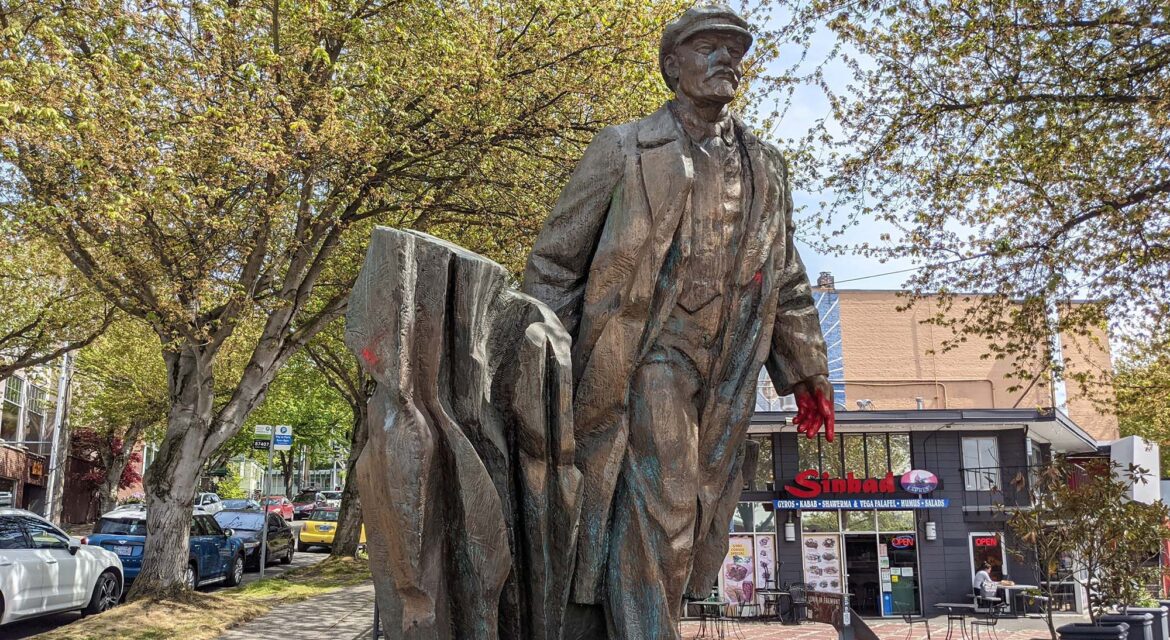 The Lenin Statue is a literal relic of a different era, created for the communist republic of what was then Czechoslovakia. Transported across the world to the Fremont neighborhood in Seattle, Washington, the piece has become one of Seattle’s most visible pieces of art. It has been able to drive considerable interest and activity to the neighborhood while also compelling deeper conversations about the kind of history that should be celebrated.
The Lenin Statue is a literal relic of a different era, created for the communist republic of what was then Czechoslovakia. Transported across the world to the Fremont neighborhood in Seattle, Washington, the piece has become one of Seattle’s most visible pieces of art. It has been able to drive considerable interest and activity to the neighborhood while also compelling deeper conversations about the kind of history that should be celebrated.

From Slovenia to Seattle
 The Lenin Statue was originally created in 1988 by Slovakian sculptor Emil Venkov as part of an art competition. It took ten years to complete and was originally installed in what is now Poprad, Slovakia. Weighing over 7 tons, the piece is unique in its portrayal of Lenin as a revolutionary rather than an intellectual.
The Lenin Statue was originally created in 1988 by Slovakian sculptor Emil Venkov as part of an art competition. It took ten years to complete and was originally installed in what is now Poprad, Slovakia. Weighing over 7 tons, the piece is unique in its portrayal of Lenin as a revolutionary rather than an intellectual.
The sculpture was toppled during the 1989 Revolution, at which point it came to the attention of Lewis Carpenter, an American veteran teaching in Poprad. Recognizing the distinctiveness of the sculpture, Carpenter acquired the piece and transported it by ship, train, and truck to his home in Issaquah, Washington. He died in 1994 but a collection of local artists agreed to put the sculpture on display to sell on behalf of his family, which now owns the statue. It has been displayed in the Fremont neighborhood ever since.
The Lenin Statue serves as a reminder of an important historical period but is also actively for sale, highlighting an important economic impact that is secondary to the cultural conversations and discussions that it has compelled.

Equal Parts History, Art and Culture
 Although offers have been made for the Lenin Sculpture, the piece has yet to be purchased. Proceeds will go to the Fremont Chamber of Commerce to support the surrounding community that has embraced, interpreted and engaged with the piece in many ways.
Although offers have been made for the Lenin Sculpture, the piece has yet to be purchased. Proceeds will go to the Fremont Chamber of Commerce to support the surrounding community that has embraced, interpreted and engaged with the piece in many ways.
For some, the Lenin Statue is an important way to remember the past. Others question the choice to pay homage to someone who has been described as a “calculating, cold-blooded killer.” The status has compelled questions about which historical figures should or shouldn’t be celebrated in these sorts of displays.
Such discussions take place in the midst of the community’s literal embrace of the piece, which might see it dressed in an outfit to celebrate an LGBTQ gathering or wearing a festive outfit to celebrate the holidays. The sculpture has been adorned with a red star during Christmas and painted as a clown but is also annually lit up to launch the shopping season for Fremont businesses.
Located just around the corner from other notable pieces of public art, the Lenin Sculpture is equal parts history, art and culture that compels engagement from residents and attracts visitors to the area.
Opportunity and Interest
 In becoming a symbol of an artistic spirit that has triumphed over ideology, the Lenin Sculpture is a reminder of how art can outlive politics. That longevity is part of the reason that numerous offers have been made to purchase the Lenin Statue. The opportunity and interest in doing so highlights how monuments can compel engagement in especially unique ways, all while enabling a direct economic impact for stakeholders.
In becoming a symbol of an artistic spirit that has triumphed over ideology, the Lenin Sculpture is a reminder of how art can outlive politics. That longevity is part of the reason that numerous offers have been made to purchase the Lenin Statue. The opportunity and interest in doing so highlights how monuments can compel engagement in especially unique ways, all while enabling a direct economic impact for stakeholders.


